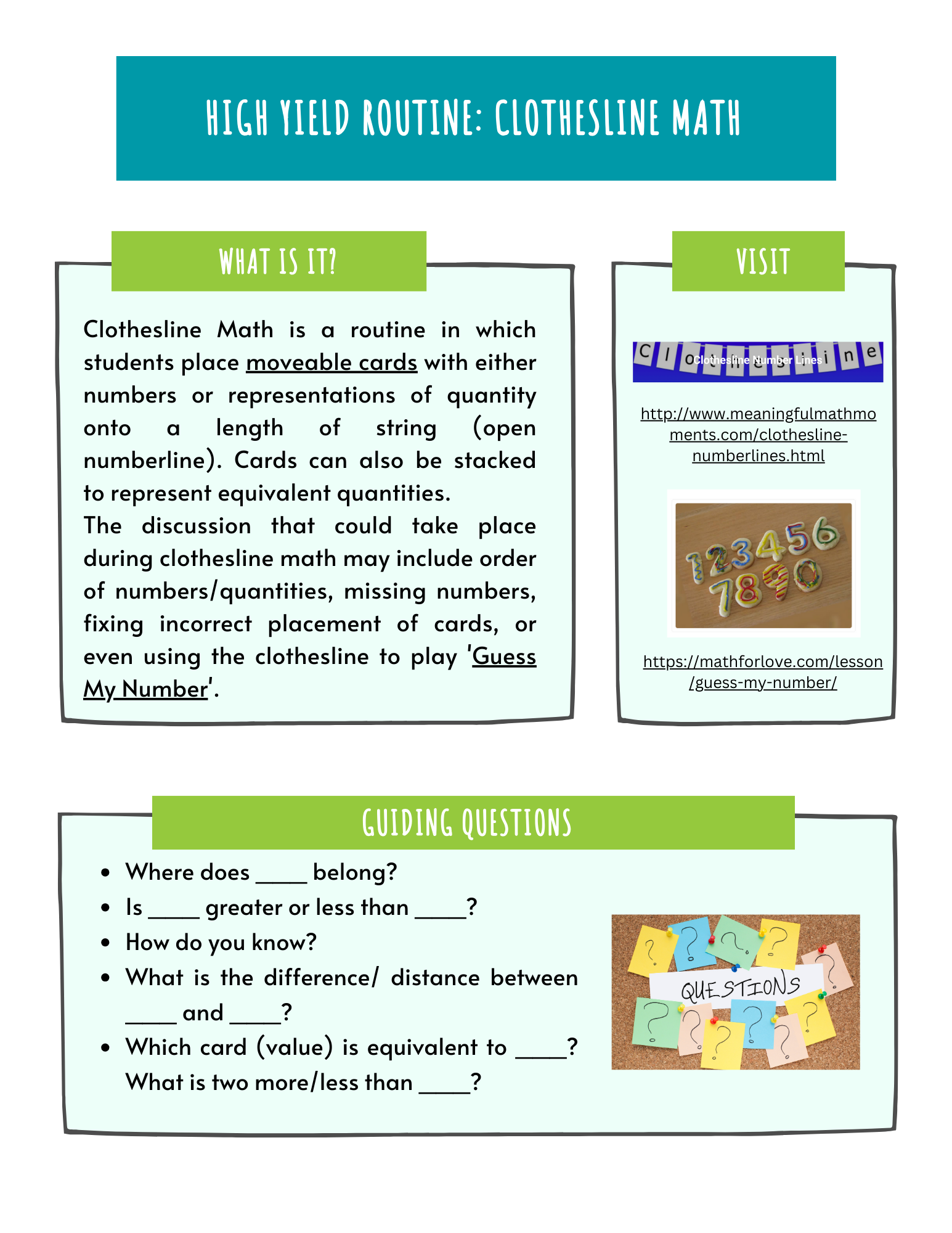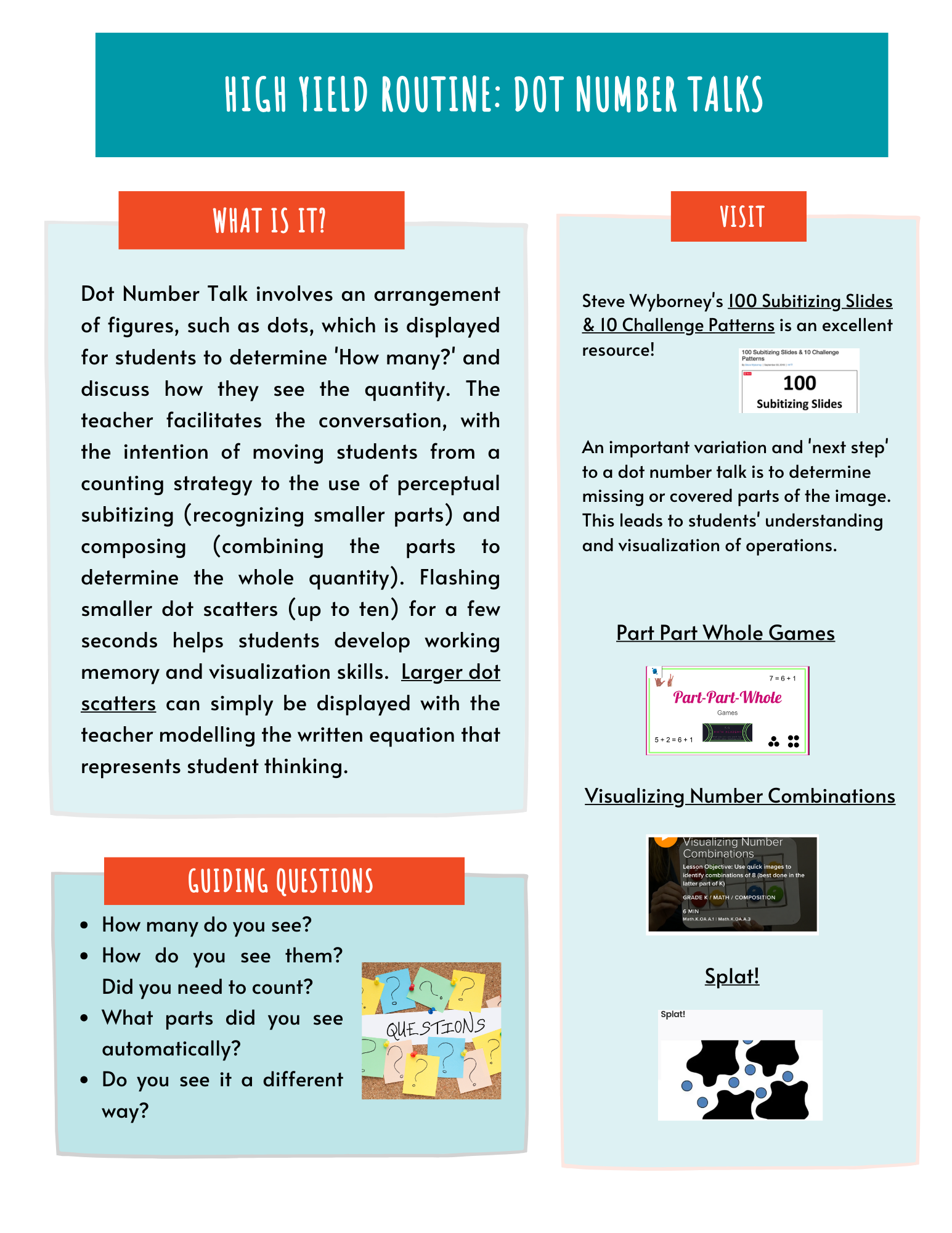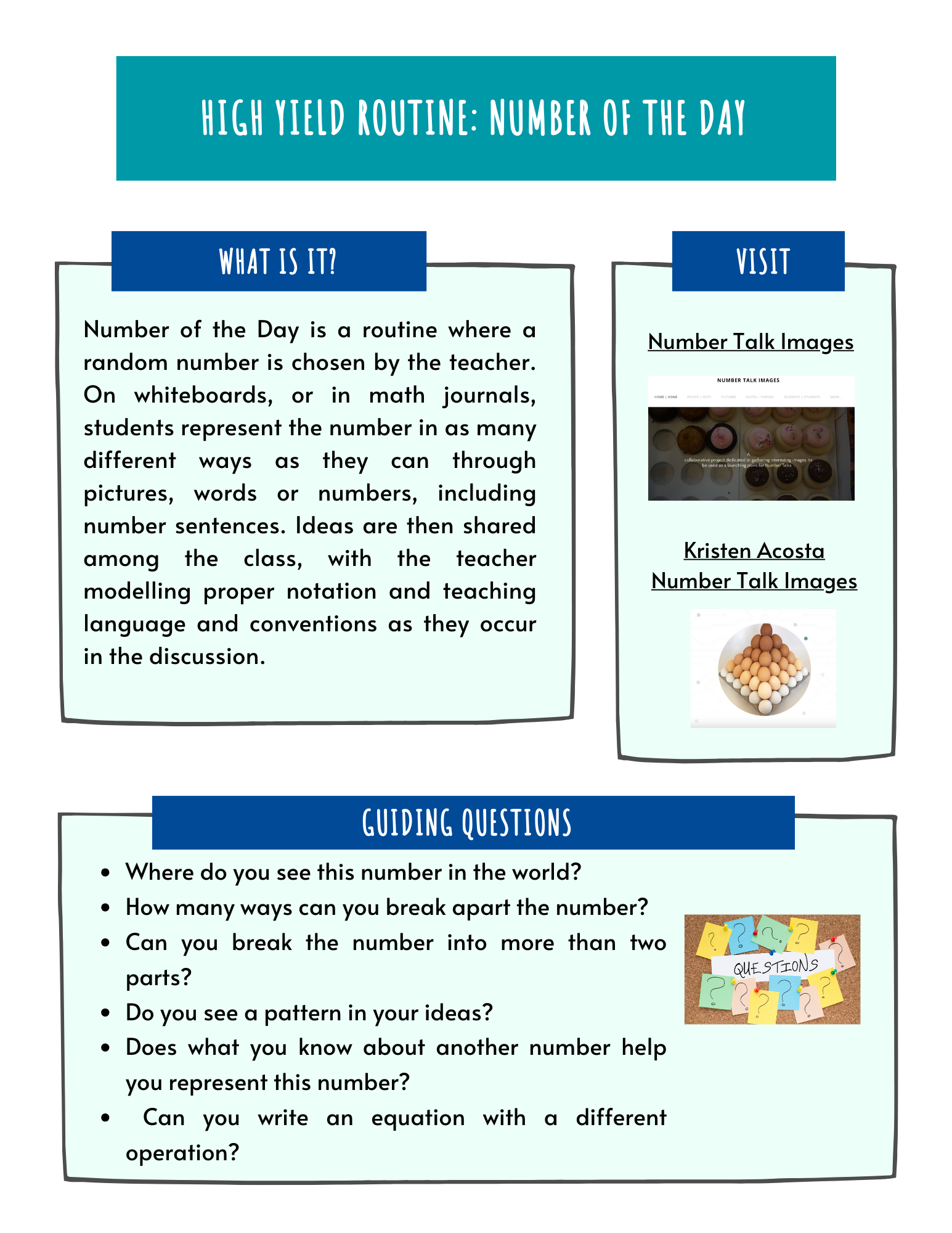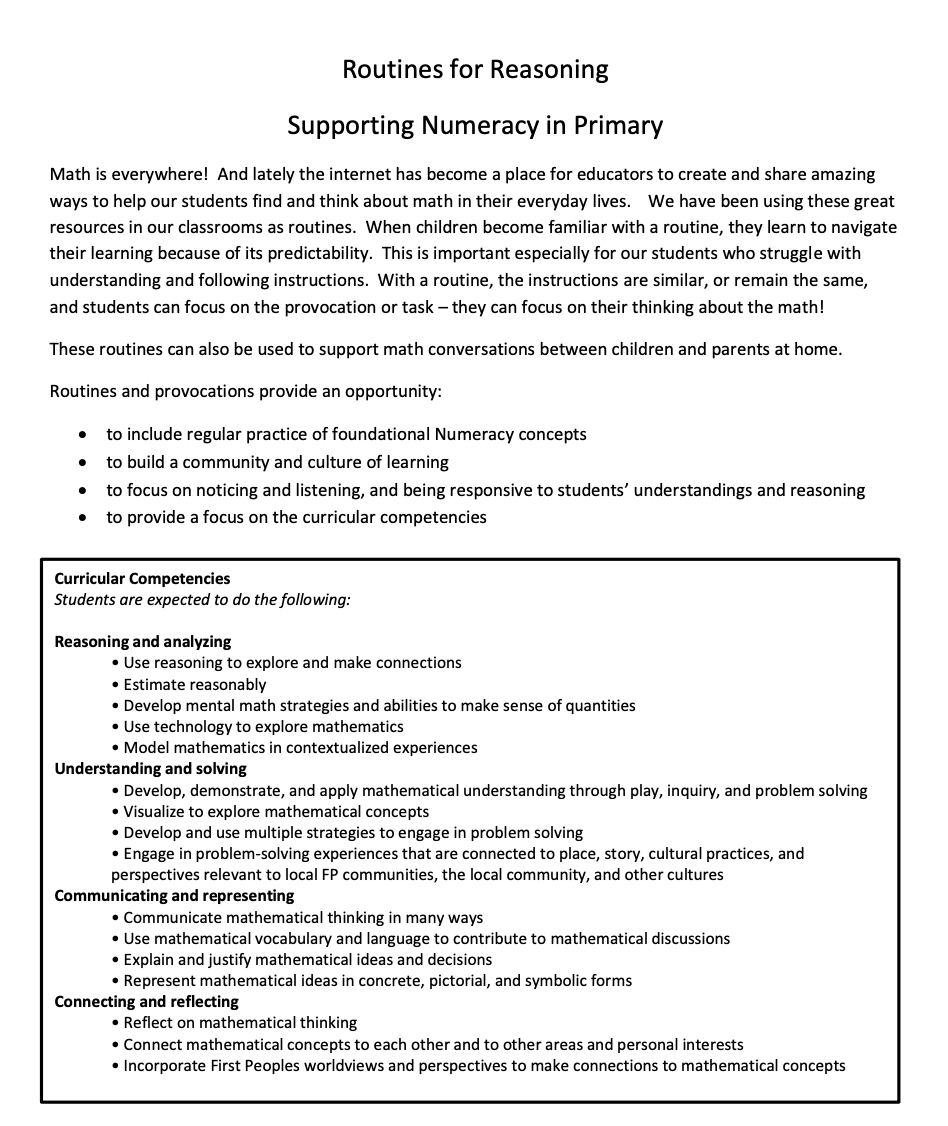An instructional routine in early mathematics is a structured, consistent practice or sequence of activities designed to help young learners develop their mathematical understanding and skills. These routines provide a predictable framework that supports student learning and engagement. Here are some key characteristics and examples of instructional routines in early mathematics:
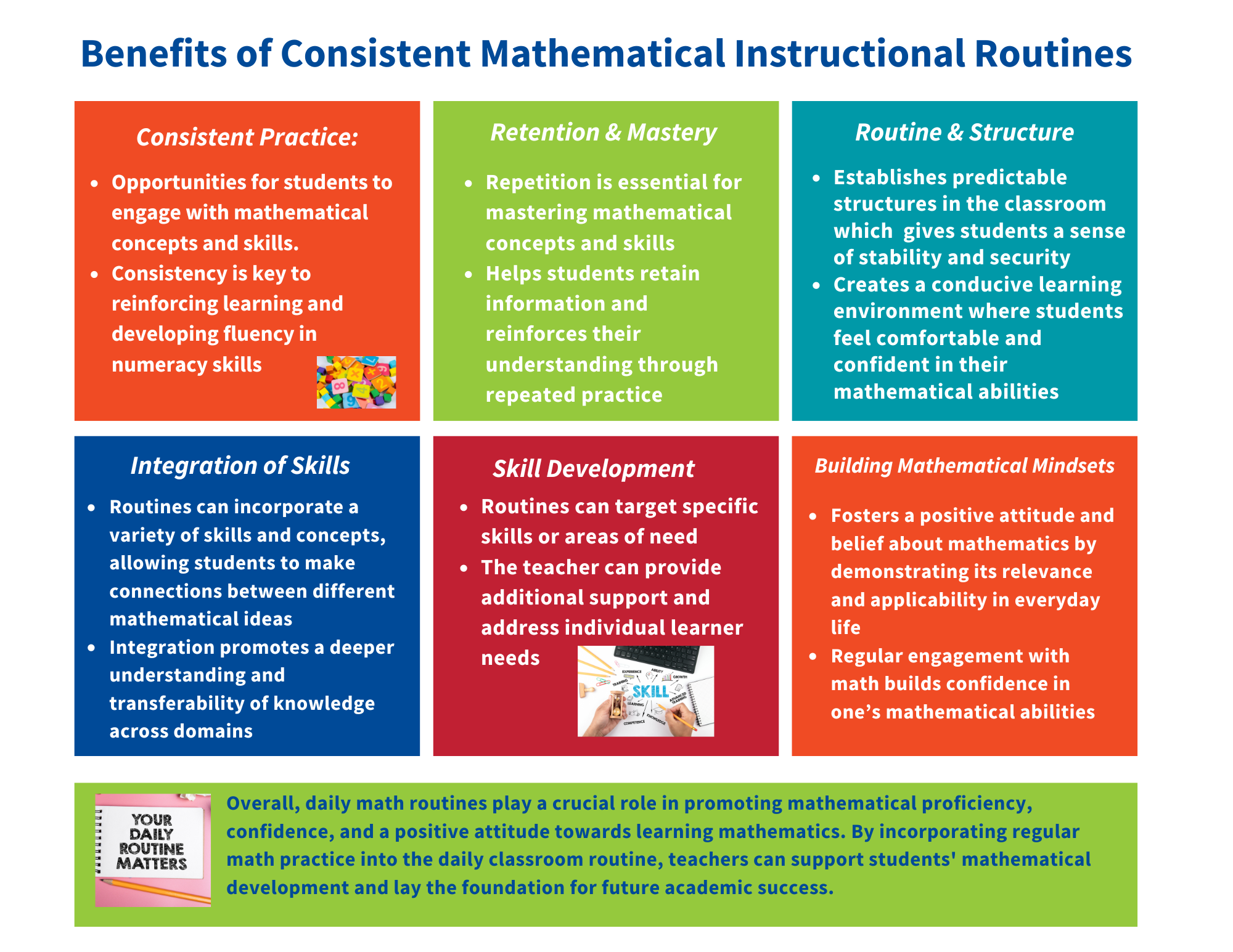
Characteristics of Instructional Routines
- Consistency: They are performed regularly (daily or weekly) to provide repeated exposure to mathematical concepts.
- Structure: They follow a clear, predictable sequence that helps students know what to expect and what is expected of them.
- Focus on Key Concepts: They target essential mathematical skills and concepts appropriate for early learners.
- Engagement: They include activities that are interactive and engaging, helping to maintain students' interest and motivation.
- Scaffolding: They provide support and gradually increase in complexity to help students build their skills step-by-step.
- Assessment and Feedback: They include opportunities for teachers to assess student understanding and provide immediate feedback.
Daily high-yield routines in mathematics are essential at the elementary school level because they provide the consistent practice and reinforcement needed to build a strong mathematical foundation, develop critical thinking and problem-solving skills, and foster a positive and confident approach to learning math.
Where to start?
Key Resources: What Informs Us?
Clothesline Math
- 0-20 Clothesline with many representations
- Clothesline Photo and How to Website
- K-1 Clothesline Numbers
Dot Number Talks
Number of the Day

